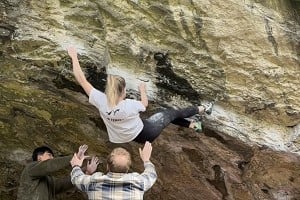
British Climbers Unite Against Irresponsible Behaviour:
Nineteen year old student Calum Nicoll and his climbing partner spent last weekend in the Peak District, at the popular rock climbing venue of Millstone, a 20m high gritstone quarry close to Hathersage near Sheffield. The pair were climbing on established classic rock climbs using ice axes and crampons. The rock has been severely damaged.
After some aborted attempts at leading routes on Saturday, (including a claim of attempting a thin ice route down the line of Monopoly - a technical and easily damaged E7 6c, first climbed by Johnny Dawes back in 1983), Calum and partner returned on Sunday, switching their focus to top roping the three star E1 5b of Embankment Route 3 and the two star VS 4c of Embankment Route 2 on The Embankment sector. Both are well protected crack-lines and extremely popular rock routes - usually in rock climbing condition for twelve months of the year.
Several parties approached the scratch-happy duo during the weekend to voice their concerns over the damage being done to the rock.
Recounting his day in the UKC Forums, Gareth H described his Sunday visit to Millstone:
"I came across 2 'climbers' at Millstone this afternoon top roping embankment 2 and 3, they were attempting to dry tool up the cracks with little success and much scraping of crampons. To say that I was angry was an understatement, my wife said I handled the situation very calmly despite me seething.
I and later another passing bloke spoke to the pair about what they were doing and very very strongly suggested that they stop immediately. Neither seemed particularly concerned about the fact that they were dry tooling grit..."
The UKC forums exploded with the majority of climbers voicing their view against the climbing of gritstone with axes and crampons, but a small minority did support Calum's actions.
Despite the obvious damage done to these routes the situation isn't quite as 'black or white' as it may seem. Classic rock climbs in the mountains of the UK are regularly climbed with axes and crampons, with a covering of frost that makes them look white yet does nothing to protect the rock from metal spikes.
Millstone has even been the scene of winter climbing before. See this photo of Tom Proctor on the classic E5 corner of Green Death, a route that was coated in a good layer of ice. However crampon scratches have appeared before at the base of this very route, so the activities from this weekend are not the first crampon damage to Millstone.
What's the difference between outcrops and mountain crags?
It seems obvious to me that Millstone's classic cracks are a no-go area, but scratch my head as I might, explaining the difference between Millstone and the short mixed climbs of somewhere like Coire an t'Sneachda seemed quite tricky.
So I asked a few other people: Dave Turnbull (CEO of the BMC), Dan Goodwin (professional Mountain Instructor, UKC winter correspondent and occasional dry tooler) and Dave MacLeod (possibly Britain's top winter and rock climber).
All three agreed that these actions were not a positive development for UK climbing.
Dave Turnbull's official BMC response:
"Dry tooling is all very well on crags that aren't established rock climbing venues but it's a different matter if people start experimenting on summer rock climbs or at popular crags. Dry tooling inevitably damages the rock (crampon scratches and axe marks) more than conventional rock climbing and is bound to result in controversy. Ice climbing on established rock climbs is a slightly different matter; this can also be controversial (i.e. people have different ideas about what constitutes winter conditions) but generally speaking – climbing on good thick ice is less damaging to the rock than pure dry tooling."
Dan Goodwin's thoughts:
"I was pretty shocked to see people dry tooling on 3 star gritstone climbs and it's a bad development which will only fuel any anti tooling sentiment. Having been involved in the Scottish Tooling Series since its inception and also enjoyed some tooling on out of the way quarries and crags with no established rock climbs present, I can comment on both angles.
Tooling has no place on crags with existing summer climbs outside the mountain environment. Behaviour like this will destroy classic climbs and impact on those who come to climb them in the future. This style of climbing has become an accepted way to train for harder mixed climbing and Tooling Competitions but those involved do so either at specific venues such as the Birnam Quarry at Dunkeld or at crags that have no established rock climbs present.
This should remain the case and people should be strongly discouraged from practising this tooling in any other environment than climbing walls, old quarries and scrappy rock. The style of mixed climbing with axes and crampons is for the UK's mountains in winter and not the valley crags just because snow is present."
It was Dave MacLeod that really hit the nail on the head for me, perhaps due to him having given this topic some serious consideration in the past.
Dave climbed a new E8 called Anubis high on Ben Nevis some years ago. He then went on to climb it again in winter, using ice axes and crampons - creating what is most likely the UK's hardest winter route. He felt fully justified that it was a legitimate winter challenge, but he did receive some criticism and his ascent provoked some discussion on mixed climbing and conditions - but surely that is in a different league to these routes at Millstone?
But why?
Dave MacLeod said:
"I know at this time of year everyone gets jumpy about getting out and swinging ice axes. Rightly so. But I was really disappointed to hear of people climbing on low lying rock climbing crags that are really popular. It's easy to go round in circles with arguments about what's justifiable and what isn't. It's up to people to make decisions about how to use the crags. It seems to me that a crucial part of your decision to take a sharp tool to a crag is respect for the others who use it. It's this principle that's always been behind sustainable use of crags for everyone. If you scratch up a popular rock climbing crag that's not in the mountains, the majority of people that use it are going to be extremely disappointed. These routes are special, and it really is a huge shame to ruin them so unnecessarily.
It's extra important to err on the side of caution because the damage you do is (in human timescales at least) essentially permanent. Once it's done it's done.
A couple of other points that are quite important - we live in a country with literally thousands of mixed routes. Moreover, there are literally thousands of great UNCLIMBED mixed routes in our mountain crags. Ones that are perfect for mixed climbing and won't ruin anyone else's experience of climbing. So why be so careless and disrespectful to other climbers? It doesn't make sense. Climbers have generally accepted that mixed climbing is acceptable on mountain crags. Sure, there are classic rock climbs on those crags too and they are genuinely contentious. I don't think anyone's found an answer to those objectives that would keep everyone happy. But lowland crags are pretty straightforward. Very few climbers would consider it acceptable, and since there are no shortage of objectives it's really quite good to respect that.
The one exception with lowland crags is where chossy rock that's unsuitable for rock climbing and hence totally neglected is taken up as a tooling venue. In Scotland this works really well. There are a handful of crags, people use them and enjoy them, and it doesn't wreck the good rock. When people do get their tools out on classics like the crags in Glen Nevis etc, we cringe at the waste of such good climbs for the sake of asking about for some more suitable venues. If you don't live down the road from a good mixed or tooling venue, I don't think that's a good enough reason to trash your local crags. Lack of local mixed climbing didn't stop Mick Fowler!"
Photo Gallery - Damage done this weekend at Millstone - photos by Alex Ekins
I'd like to highlight one part of Dave MacLeod's comments:
"A crucial part of your decision to take a sharp tool to a crag is respect for the others who use it. It's this principle that's always been behind sustainable use of crags for everyone."If other climbers are questioning what you are doing, perhaps it's time to question yourself.
Climbing is a small minority sport. It has a tight knit community and a very fragile crag environment. We have the work of the people at the BMC and the MCofS to thank for access to many of our crags. And we have the courteousness and friendliness of other climbers to thank for many of our best days out on the rock and ice. Sharing crags, belays and beers with others is all part of what we do and love. For many - it's the best part.
It's what keeps climbing so special. Lets hope it stays that way.



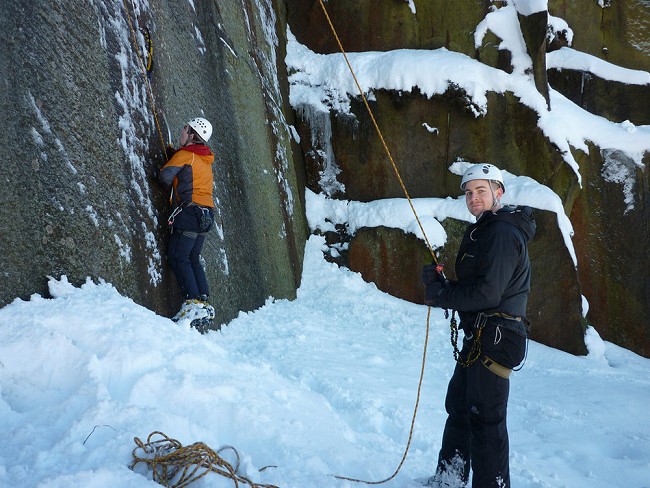
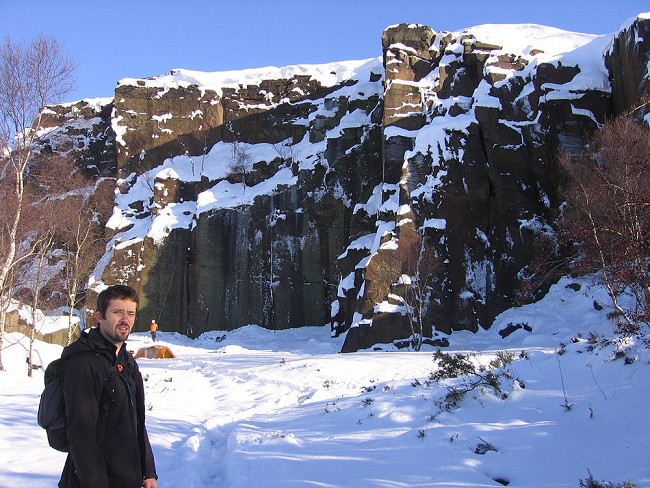

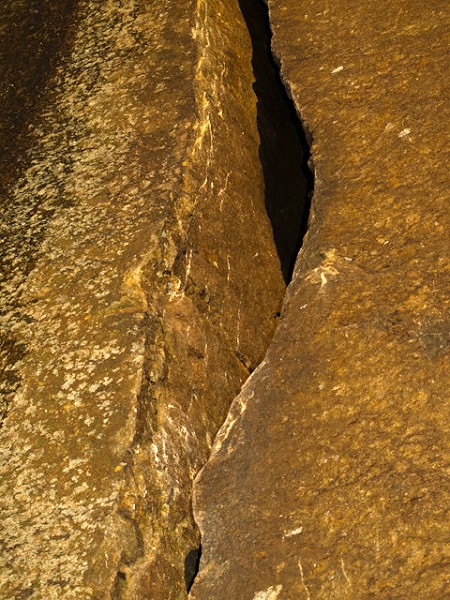
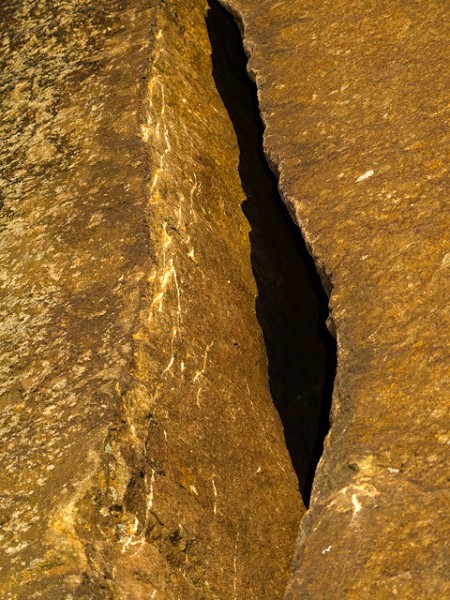
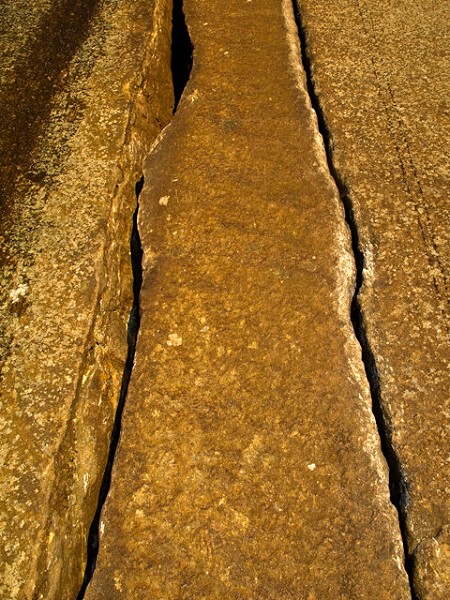

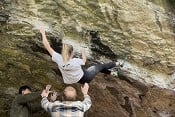










Comments